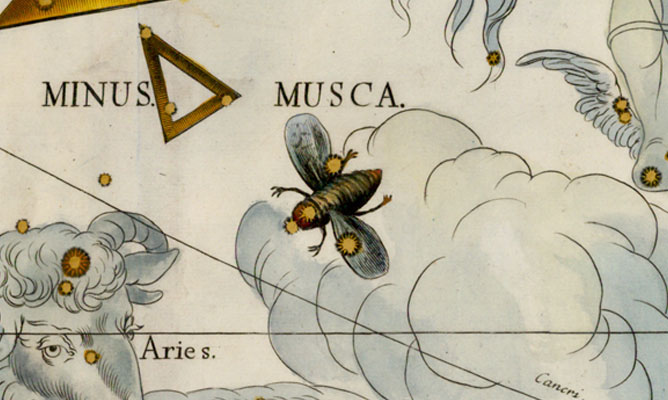Musca: The Fly
Pronunciation: MUSS-cuh
| Musca Constellation Profile | |
|---|---|
| Abbreviation: Mus | Genitive: Muscae |
| Origin: Keyser/de Houtman | Location: Southern Hemisphere |
| Best View (North): | Best View (South): |
| Bordering Constellations: Chamaeleon, Apus, Circinus, Centaurus, Crux, Carina | |
The Myth Behind the Constellation Musca
Musca, “The Fly”, is a late sixteenth-century creation of Dutch navigators Pieter Dirkszoon Keyser and Frederick de Houtman. The two created 12 constellations during expeditions under the southern skies. Musca has had several names along the way, including Apis (The Bee), Musca Apis (The Fly Bee) and Musca Australis (The Southern Fly).Musca Constellation Points of Interest
Interesting stars and objects.Bright Stars in Musca
These are the stars in Musca with a minimum magnitude of 3.0.| Name | Bayer Name | Magnitude | Color | Luminosity | Distance |
|---|---|---|---|---|---|
| Alpha Muscae | Alpha Muscae | 2.69 | Blue-White | 2,093 suns | 306 ly |